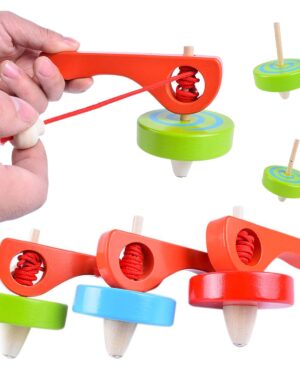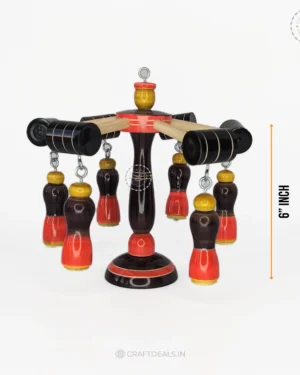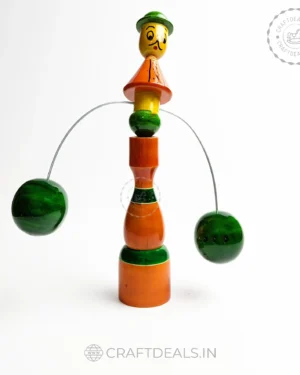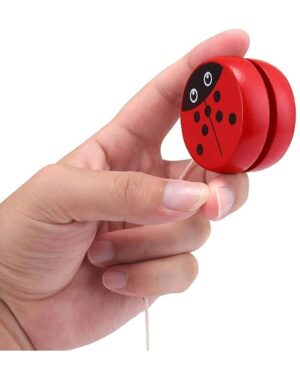Introduction
The spinning top is a timeless toy that has captivated children and adults alike for centuries. Its simple design and mesmerizing motion have made it a beloved plaything across cultures and generations. But have you ever wondered about the origins of the spinning top? How did it evolve over time, and what role has it played in different societies? Join us on a journey through the fascinating history of the spinning top as we explore its origins, cultural significance, and enduring appeal.
The Fascinating History of the Spinning Top
The spinning top has a long and rich history that dates back thousands of years. It is believed to have originated in ancient civilizations, where it served both as a toy and a tool for various purposes. Let’s delve into the captivating story behind this iconic toy.
1. The Ancient Beginnings
The origins of the spinning top can be traced back to ancient civilizations such as Egypt, Greece, and China. In these early societies, tops were often made from natural materials like wood, clay, or bone. They were spun by twirling a string or cord around them and pulling it to create a rotational motion. The ancient Egyptians, for example, used spinning tops in religious rituals and believed that the spinning motion symbolized the cycle of life and the movement of celestial bodies.

Ancient Roman wooden spinning top, from Tebtynis (Egypt), dating from the 1st–3rd century CE. Tops were used as toys in ancient Rome
2. Spinning Tops in Mythology and Folklore
Throughout history, spinning tops have found their way into the myths and folklore of various cultures. In Greek mythology, the spinning top was associated with the goddess Athena, who was said to have invented the toy. According to the legend, Athena gave a spinning top to a young girl named Arachne, who had challenged her to a weaving contest. Arachne’s skills in spinning and weaving were unparalleled, and as a punishment for her arrogance, Athena transformed her into a spider, forever condemned to spin webs.
3. Cultural Significance
Spinning tops have held significant cultural and symbolic value in different societies. In Japan, for instance, the spinning top, known as “koma,” has been a popular toy since ancient times. It is often associated with festivals and is considered a symbol of good luck and prosperity. In Native American cultures, tops were used for divination and spiritual rituals, with their spinning motion believed to provide insights into the future.

The Native American Ghost Dance and How it Inspired Fear Among White Americans During the Late 19th Century | by Peter Paccone.
4. The Evolution of Spinning Tops
As time progressed, spinning tops underwent various transformations in design and materials. In the 18th century, metal tops became popular, thanks to advances in manufacturing techniques. These metal tops offered improved balance and durability, allowing for longer and more stable spins. With the advent of the Industrial Revolution, spinning tops were mass-produced and became more accessible to a wider audience.
5. Tops as Educational Tools
Beyond their entertainment value, spinning tops have also served as educational tools. In the 19th century, tops were used in schools to teach concepts of physics, such as rotational motion, balance, and momentum. By experimenting with different tops and observing their behavior, students gained a practical understanding of scientific principles.
6. Tops in Popular Culture
Spinning tops have left their mark on popular culture, making appearances in literature, movies, and even as symbols in marketing and branding. One notable example is the movie “Inception,” where a spinning top is used as a totem to determine whether a character is in a dream or reality. This iconic image has become synonymous with the film and has sparked discussions about perception and reality.

Inception is a 2010 science fiction action film[4][5][6] written and directed by Christopher Nolan. The film stars Leonardo DiCaprio as a professional thief who steals information by infiltrating the subconscious of his targets.
7. The Enduring Appeal of Spinning Tops
Despite the advancements in technology and the rise of digital entertainment, spinning tops continue to captivate people of all ages. The simplicity of their design, the joy of watching them spin, and the tactile sensation of holding a spinning top in one’s hand have contributed to their enduring appeal. Spinning tops provide a break from screens and offer a tangible and interactive play experience that can be enjoyed both indoors and outdoors.
8. Types of Spinning Tops
Over time, various types of spinning tops have emerged, each with its own unique characteristics. Here are a few notable types:
- Traditional Wooden Tops: These classic tops are typically made of wood and feature a pointed tip for balance. They are spun by twirling a string or by using a handheld launcher.
- Beyblade: Originating from Japan, Beyblades are modern spinning tops that have gained tremendous popularity. These tops are made of plastic and feature intricate designs, customizable parts, and competitive gameplay.
- Gyroscopic Tops: Gyroscopic tops, also known as precision tops, are engineered to maintain stability and balance while spinning. They often come with a spinning base that keeps them upright even on uneven surfaces.
-
Product on sale
 Spindle Top | Wooden Spinning Toy (14 CM)Original price was: ₹ 380.₹ 165Current price is: ₹ 165.
Spindle Top | Wooden Spinning Toy (14 CM)Original price was: ₹ 380.₹ 165Current price is: ₹ 165. -
 Channapatna Toy Wooden Carousel – Colorful Hand Spin Toy₹ 599
Channapatna Toy Wooden Carousel – Colorful Hand Spin Toy₹ 599 -
 Channapatna Toy Balancing Joker | Eco Safe Toys For Kids Non Toxic Colors₹ 442
Channapatna Toy Balancing Joker | Eco Safe Toys For Kids Non Toxic Colors₹ 442 -
 YoYo Toy | Buy Wooden YoYo Toy Fun for All Ages (Pack of 2)₹ 226
YoYo Toy | Buy Wooden YoYo Toy Fun for All Ages (Pack of 2)₹ 226
9. The Role of Spinning Tops in Child Development
Spinning tops not only provide entertainment but also contribute to child development in various ways. Here are some benefits of playing with spinning tops:
- Fine Motor Skills: Spinning tops require manual dexterity and hand-eye coordination, helping children refine their motor skills.
- Focus and Concentration: Watching a spinning top requires concentration and focus, promoting attention skills and the ability to stay engaged.
- Physics Understanding: Playing with spinning tops introduces children to concepts such as balance, gravity, and rotational motion, fostering an early understanding of basic physics principles.
FAQs about Spinning Tops
Here are some frequently asked questions about spinning tops:
Q1: How do spinning tops work?
Spinning tops work by converting rotational motion into a stable spin. The initial force applied causes the top to spin around a central axis, maintaining balance as long as the rotational energy is preserved.
Q2: Can spinning tops spin indefinitely?
In theory, spinning tops can spin indefinitely in a vacuum without any external forces acting upon them. However, due to friction and other factors, they eventually lose momentum and come to a stop.
Q3: Are spinning tops only for children?
Not at all! Spinning tops are enjoyed by people of all ages. Many adults find spinning tops to be a relaxing and meditative activity, providing a break from daily stressors.
Q4: Are there any cultural variations of spinning tops?
Yes, spinning tops have cultural variations worldwide. For example, the dreidel, a spinning top used during Hanukkah celebrations, is popular in Jewish traditions.

A dreidel, also dreidle or dreidl is a four-sided spinning top, played during the Jewish holiday of Hanukkah.
Q5: Can spinning tops be collectibles?
Absolutely! Some spinning tops are designed with intricate craftsmanship, making them collectible items sought after by enthusiasts.
Q6: Are there any world records related to spinning tops?
Yes, there are various world records associated with spinning tops, such as the longest spin time or the largest spinning top ever created.
Conclusion
The fascinating history of the spinning top takes us on a journey through time, unveiling its ancient origins, cultural significance, and enduring popularity. From the humble beginnings in ancient civilizations to the modern-day variations and educational applications, spinning tops continue to charm and engage people across the globe. So, next time you see a spinning top twirling gracefully, take a moment to appreciate the captivating legacy it carries from generations past.


